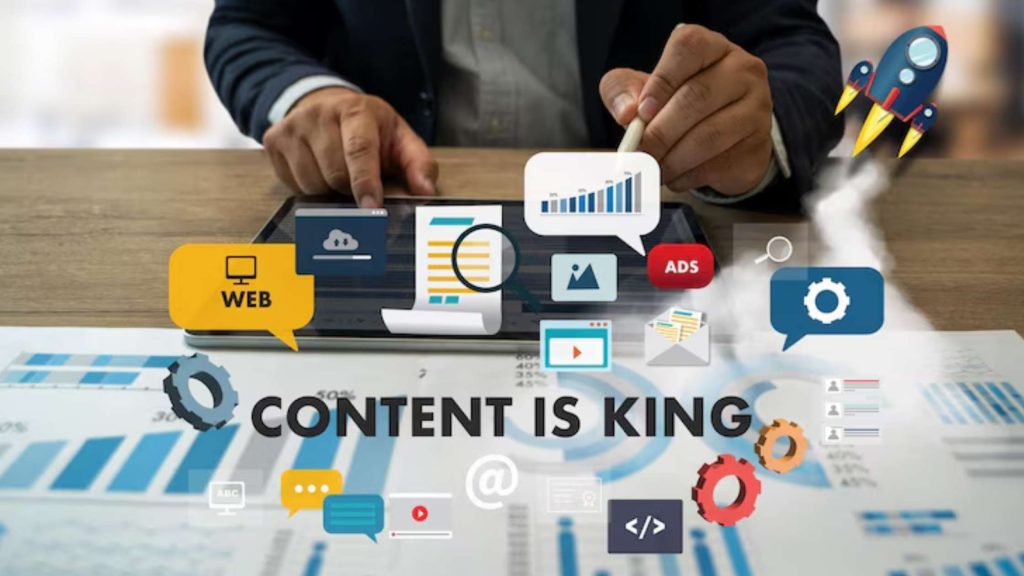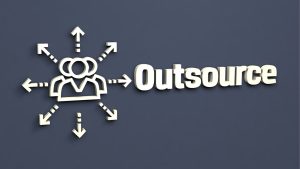Introduction
If you’re building an online brand in 2025, you know the challenge: differentiation. It’s not only about being seen — it’s about being remembered, trusted, and chosen. Now, enters a good Digital Audience Strategy.
The center of that strategy is Content.
Not random blogs or endless social media convert. We’re talking about content that is deliberate and purpose-driven by design, that attracts the right people, keeps them engaged, and moves them toward paying customers — and perhaps even advocates for your brand.
So let’s take a minute and discuss why content isn’t just one piece of the puzzle — rather, it’s the engine that powers your entire Digital Audience Strategy.
What is Digital Audience Strategy?
Simplistically, your Digital Audience Strategy is how you get known and engaged with your target audience. It’s not just about driving traffic — it’s about drawing in the people you want, converting them into engaging followers, and finally, into paying customers who return and bring their friends.
Think about it this way: You’re not trying to get more eyeballs. You’re building relationships — at scale.

Your strategy outlines:
1. Who is your audience? This is more than just demographics. It requires knowing their behaviors, challenges, values, and motivations. Are they startup founders in search of productivity tools? Are they time-challenged parents? The more specific your audience profile is, the more specific you can get with content that addresses them directly.
2. The social media platforms that they use: Identifying the platforms that your audience spends time on helps with your choice of social media platforms. Do they have an active LinkedIn, Instagram, Reddit, or YouTube presence? Do they look on Google or scroll TikTok for answers? Finding out where they are already spending their time makes your content strategy much more focused and successful.
3. What do they care about?: What problems do they wish to solve? What type of content do they appreciate or aspire to? By knowing their goals and interests, you can tailor your messaging according to their needs. Our empathy and value-driven content, then, come into play, so that your content doesn’t just land, it resonates.
4. How you’ll get them there and keep them there in the long run: This means all of the channels, content types, and touchpoints you’ll use to reach your audience again and again, not once. It’s all about journeying: awareness, trust, engagement, conversion, and loyalty. Your strategy should outline your consistent approach for getting them back.
When all these elements are laid out clearly, your Digital Audience Strategy is a focused, intentional framework — not guesswork or “posting to be active.”
Also Read: Virtual Assistant Services in Palma
Content is the Fuel of Your Strategy
You can have crystal-clear goals and the ultimate tools; however, without content in place, your Digital Audience Strategy is just an ambitious outline.
Content is how your audience discovers you, learns about you, and decides whether you’re deserving of their time. It’s on the clock 24/7 — appearing in search results, social feeds, inboxes, and literally anywhere your audience hangs out online.

Here’s why it’s at the center of everything:
1. It drives traffic: Strategic content generates traffic from search, social shares, and backlinks. SEO-optimized blogs, helpful guides, or lead magnets attract people who are already looking for what you have to offer.
2. It cultivates trust: The more relevant, genuine, and consistent your content is, the more your audience will regard you as an authoritative voice within your industry. Trust is what transforms interest into action.
3. It spurs action: Content should not only make people aware — it should get people moving. A strong CTA in a blog, a lead magnet in an email, or a video testimonial on a landing page- content is what converts attention into conversion.
Your content is where the battle is won. It’s the face, voice, and value of your brand and it’s what makes your Digital Audience Strategy actually work.
Different Types of Content for Disparate Purposes
One-size-fits-all content doesn’t work — not every content type serves the same purpose. A good Digital Audience Strategy employs multiple formats to meet people at different stages of their journey, each with its specific mission.

Let’s break it down:
1. Blog Posts: Great for SEO, educational purposes, and long-term visibility. A blog solves common queries, gains good SERP positioning, and generates steady traffic over time. It sets you up as an expert and draws in people in search of solutions.
2. Social Media Posts: Good for exposure and immediate interaction. Regular, readable updates can add personality, advertise blog posts , and start discussions. It’s where folks meet your brand before they trust it.
3. Videos: Great for teaching, storytelling, or explaining how things work. Whether it’s a short tip on Instagram or an in-depth explainer on YouTube, video builds connection quickly and absorbs attention significantly longer than text alone.
4. Emails: Time is still the best tool for nurturing relationships. Email allows a personalized approach, provides consistent value, and drives conversions through targeted sequences and offers.
5. Case Studies & Testimonials: These build social proof. Good case studies help prospects understand the possible results they can expect — even better if you can support it with data and before-and-after photos.
6. Lead Magnets: These can be checklists, eBooks, or templates, given in exchange for an email. It’s not just for lead conversion but also for building your list with people already interested in your value, making future outreach easier.
The secret is to mix and match these types of content based on your brand voice, audience preferences, and marketing goals so each piece has a role to play in your Digital Audience Strategy.
Content-mapping to the audience journey
You’re talking to different people each time, so should your content. A solid Digital Audience Strategy marks the timing of your content with the position of your audience in their journey with your brand.

1. Awareness - Top of Funnel (TOFU): This is where people are finding you. You can use blog posts, social media content, videos, lead magnets, and others to introduce your brand and make value instantly relevant to your audience. The aim here is grand but simple: to be seen and to remain salient.
2. Consideration – Middle of Funnel (MOFU): Now they know you’re there — but are you a fit? This is where email sequences, webinars, case studies, and product explainers all land. Your job here is to build relationships, answer objections, and show value.
3. Bottom of Funnel (BOFU) – Conversions: By this stage, they’re pretty much primed to purchase or engage. Give them a nudge with testimonials, comparison lists, FAQs, and personalized offers.
When you sync your content to the audience’s journey, it becomes as natural as breathing. You’re not pressuring a sale — you’re facilitating a decision. That’s the key to a robust Digital Audience Strategy.
Useful Metrics That Indicate That Content Is Working
You can only improve what you measure. A “smart” Digital Audience Strategy measures much more than pageviews — it measures content performance at each point in the audience journey.

Now, here are the metrics that matter:
1. Organic traffic: This is a key indicator of how well your content is ranking and attracting new site visitors from search engines. An increase here is a solid indicator that your efforts in SEO and content are aligned.
2. Bounce rate & time on page: These two metrics let you know whether your content is engaging or not. High bounce rates or low time on page? That typically indicates your material is falling short.
3. Engagements (likes, comments, shares): These are all indicators that your content is hitting a nerve. If people are sharing, reacting, or replying, it’s doing its job of connecting and building community.
4. Conversion rate: This is the final metric. Are people registering, purchasing, or scheduling after consuming your content? This is what content ROI looks like.
5. Email open and click rates: If your strategy involves email (and it better), know how often people open and interact with your content. Those numbers tell you what topics and offers resonated.
Also Read: Virtual Assistant Services in Seville
Common Mistakes in Content Strategy
Even with the best-laid plan, it’s easy to get trapped.

If you miss out on any of these mistakes, you are crippling your Digital Audience Strategy:
1. Inconsistency: Posting randomly kills momentum. Consistency, even posting once a week, builds trust over time.
2. Generating content without purpose: Each piece of content has a job to do. For Google rank, click-through, or loyalty — if you can’t state its purpose, it probably shouldn’t be published.
3. Not focusing on the fundamentals of SEO: Writing amazing content is only half of the work. Without optimization — keywords, structure, meta tags, internal links — it won’t rank or be found.
4. Failing to listen to your audience: Your content should grow and change with your audience’s needs. Listen to feedback, comments, and questions. That’s where your next brilliant topic comes from.
5. Attempting to do it all on your own: A strong plan unravels if you can’t maintain momentum. Delegating is not a luxury — it’s how you achieve consistency and scale.
How to Up Your Content Game With Delegation
Even with a well-defined Digital Audience Strategy, implementation is a time-consuming exercise — writing, editing, formatting, scheduling, publishing. And if you’re doing everything yourself, that time adds up quickly.
Delegation allows you to stay focused on the broader vision while others work on the operational components. It’s not about doing less — it’s about doing the right things.

Things you can easily pass off:
1. Formatting and uploading blogs: Once the content is written, formatting it for the web — proper headings, links, pictures, and SEO tags — can waste precious time. This whole process can be rolled into your CMS by a virtual assistant, so it’s ready to go without worry.
2. Repurposing content across platforms: A single blog post can be transformed into social media captions, LinkedIn posts, email snippets, and Instagram carousels. A good assistant can pull highlights and tailor your content to each platform while maintaining your voice.
3. Design visuals or templates: Visual consistency is an issue. By handing off template design, quote cards, or featured images, you have the peace of mind that your content will be looking sleek and on-brand without you opening up Canva 10 times per day.
4. Post schedule management: With tools like Buffer or Later, a VA can schedule your entire posting calendar, so you don’t get behind, but also don’t have to be “on” all the time.
5. Pulling analytics reports: Rather than piecing together Google Analytics or social insights on your own, have someone prepare weekly or monthly reports summarizing the most important takeaways. You stay in the know without spending hours chasing down data dashboards.
6. Proofreading and quality assurance: Another set of eyes will help pick up on grammar issues, formatting errors, and broken links. This added touch helps ensure everything that leaves you looks good on your brand.
7. Delegation goes beyond freeing up your time: It’s about working smarter, conserving your energy, and creating a content strategy that can be scaled and made sustainable.
Conclusion
Content isn’t part of your Digital Audience Strategy. It’s how people learn of you, become familiar with you, and choose to have faith in you.
Your strategy isn’t working if your content isn’t made with purpose, aligned with your audience’s path, and delivered consistently — But when is it? You don’t just build traffic. You create a community, a brand, a business that grows with intent.
Start simple. Stay consistent. Never hesitate to delegate what slows you down.
About Us
Tasks Expert offers top-tier virtual assistant services from highly skilled professionals based in India. Our VAs handle a wide range of tasks, from part time personal assistant to specialized services like remote it support services, professional bookkeeping service etc. Furthermore, it helps businesses worldwide streamline operations and boost productivity.
Ready to elevate your business? Book a Call and let Tasks Expert take care of the rest.









